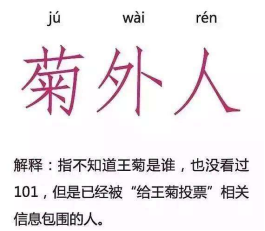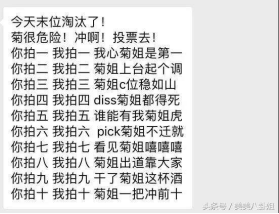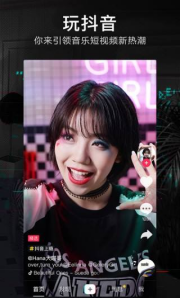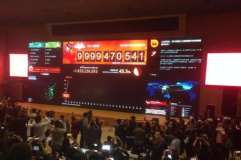
当前课程知识点:New Media and Cultural Studies > Final Exam > Final Exam > Discussion Questions of Lesson 6
返回《New Media and Cultural Studies》慕课在线视频课程列表
( Choose One to Answer)
1. Please analyze interactive rituals in online subcultures based on the case of “Ju Culture” in Produce 101.
In the summer of 2018, the first female idol-picking contest Produce 101 is aired and took the internet by storm, and became a hot topic among many young people. In this online reality show jointly produced by Tencent Video and Tencent Music Entertainment Group, 101 girls practice hard and give performances, and in the end 11 girls with the highest votes from fans will graduate from their trainee program and form a female group of idols. The black horse of the show is Wang Ju, a self-supporting trainee. Her journey in the show is not an easy one. Initially not favored as a promising candidate for the female idol group, she gradually gained great support from fans, and led to an online carnival of “Ju Culture” after her name, which is worth our attention. Please analyze interactive rituals in online subcultures based on the case of “Ju Culture” in Produce 101.




Slogans created by netizens to vote for Wang Ju
2. Please talk about the interactive rituals in short music videos based on your user experience on the APP Tik Tok.
Due to the rapid development of mobile internet technology, users’ habit of using fragmented time, more timely transmission speed and higher degree of interactivity, the rise of short video industry become rapid in recent years. The short video APP Tik Tok was launched in 2016. As of June 2018, Tik Tok released its user data for the first time. In China, DAU (daily active user) exceeds 150 million, MAU (monthly active user) exceeds 300 million, of which around 40% of the users are aged between 24 and 30, and over 500 government and media institutions joined Tik Tok. As the leader of short music video APPs, Tik Tok targets towards innovation in short music videos among young people. Users can choose any style of audio as background music to take a 15-second music short video and match it with body movements such as mouth movement, facial expression or dancing. The variety of content is the mainstream of short videos on Tik Tok, including music, dance, delicacy, tourism and sports, parent-child, altogether 19 categories. Please talk about the interactive rituals in Tik Tok based on your user experience on Tik Tok.




3. With “Double 11” shopping festival approaching, please share your view on the act of “creating festival” from the perspective of ritual criticism based on your own experience.
“Double 11” Shopping Carnival refers to the online discount day on November 11 every year, which originates from the online promotions held by Taobao Mall (Tmall) on November 11, 2009. Since Tmall launched the “Double 11” Shopping Festival in 2009, Nov. 11th has truly become a shopping festival nationwide every year. In 2018, the final volume of transactions on Tmall platform reached 213.5 billion RMB, a year-on-year increase of 27%. During every shopping carnival, we can feel the ritual atmosphere everywhere on Tmall’s homepage. Words such as “main venue”, “parallel venue” seem to show that they have no difference with major on-site ceremonies. Many people around us will also join the shopping carnival ritual of “Double 11”. Please analyze: (1) Do you like this new media ritual? (2) Compared with previous rituals (such as the Spring Festival, Lantern Festival, etc.), what is brilliant about the “Double 11” ritual?




“Double 11”Shopping Carnival
返回《New Media and Cultural Studies》慕课在线视频列表
-1.1 Culturalism
--1.1
-1.2 Marxist Theory
--1.2
-1.3 Structuralism and Post-structuralism
--1.3
-1.4 Gender and Sexuality
--1.4
-Unit Test 1
-Discussion Questions of Lesson 1
-2.1 Aristotle’s Classical Rhetoric
--2.1
-2.2 Kenneth Burke’s New Rhetoric
--2.2
-2.3 Frame and Metaphor: Two Weapons in the Fight for Discourse
--2.3
-2.4 The Concepts of Our Time and the Secret to their Creation
--2.4
-Unit Test 2
-Discussion Questions of Lesson 2
-3.1 Understanding Signs: From Saussure to Pierce
--3.1
-3.2 The Power Relationship Behind Signs
--3.2
-3.3 The Landscape of Signs in the Cyber World
--3.3
-3.4 A Model of Communication Semiotic Criticism
--3.4
-Unit Test 3
-Discussion Questions of Lesson 3
-4.1 Feminist Stance in Romance Web Fiction
--4.1
-4.2 Paradox of Body Consumption
--4.2
-4.3 Women’s Empowerment in New Media
--4.3
-Unit Test 4
-Discussion Questions of Lesson 4
-5.1 Optimistic Theories of Cultural Consumption
--5.1
-5.2 Pessimistic Theories of Cultural Consumption
--5.2
-5.3 Fan Culture and Convergence Culture
--5.3
-Unit Test 5
-Discussion Questions of Lesson 5
-6.1 Understanding Rituals
--6.1
-6.2 Media Events and Media Rituals
--6.2
-6.3 Interaction Ritual Chains
--6.3
-6.4 New Media Ritual Criticism
--6.4
-Unit Test 6
-Discussion Questions of Lesson 6
-7.1 Overview of Subcultural Studies
--7.1
-7.2 Birmingham School’s Subcultural Studies
--7.2
-7.3 The Incorporation of Subcultures
--7.3
-7.4 Case Studies of Subcultures
--7.4
-Unit Test 7
-Discussion Questions of Lesson 7
-8.1 Space and Spatial Epistemology
--8.1
-8.2 Spatial Practice and Power Production
--8.2
-8.3 Lefebvre’s Theory of the Production of Space
--8.3
-8.4 Foucault’s Theory of Space Discipline
--8.4
-8.5 Cultural Consequences of the Production of Space
--8.5
-Unit Test 8
-Discussion Questions of Lesson 8
-9.1 Telegraph: Technology and Cultural Changes
--9.1
-9.2 Virtual Reality: Technology and Space-Time Restructuring
--9.2
-9.3 Mobile Phone: Technology and Subjectivity Alienation
--9.3
-9.4 WeChat: Technology Reshapes Social Relationships
--9.4
-Unit Test 9
-Discussion Questions of Lesson 9
-10.1 Five Shapes of Body
--10.1
-10.2 Philosophical “Adventure” of Body
--10.2
-10.3 The Code of Power Behind Body
--10.3
-10.4 Body Politics in the Era of New Media
--10.4
-Unit Test 10
-Discussion Questions of Lesson 10
-11.1 Internet Freedom: Media Imperialism in the Global Village
--11.1
-11.2 Cyber Diplomacy: The New Blue Ocean of Global Political Communication
--11.2
-11.3 Cyber Terrorism: The Challenge of New Media Decentralization
--11.3
-Unit Test 11
-Discussion Questions of Lesson 11
-12.1 Overview of Research Methods
--12.1
-12.2 Ethnography
--12.2
-12.3 Focus Group
--12.3
-12.4 Interactive Narrative
--12.4
-Unit Test 12
-Discussion Questions of Lesson 12
-Final Exam

